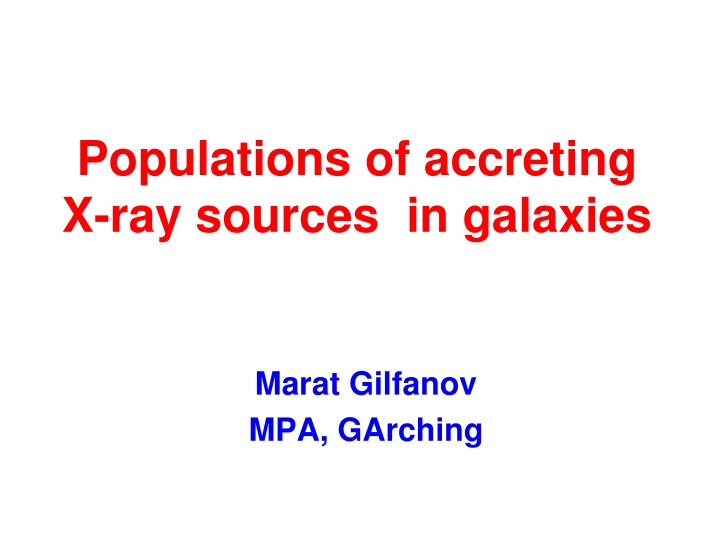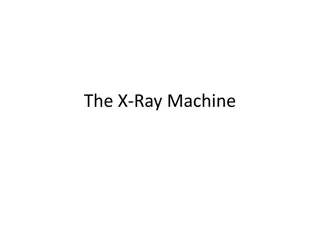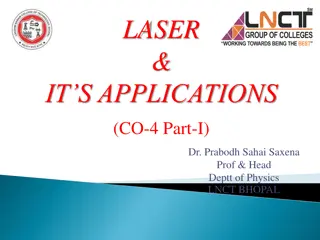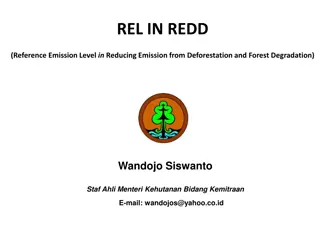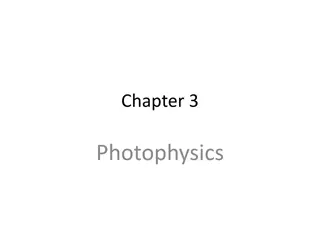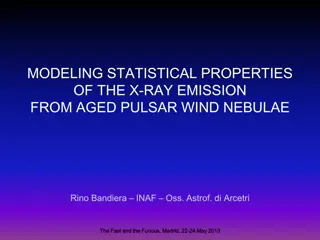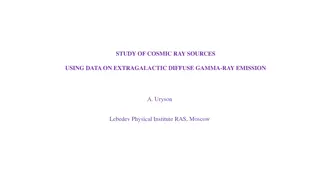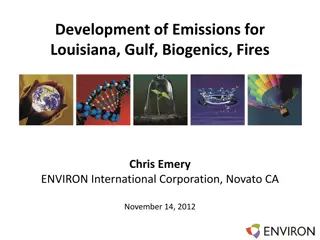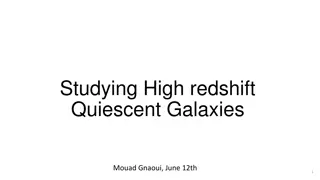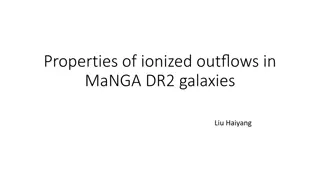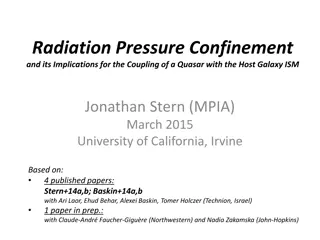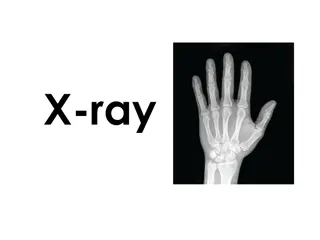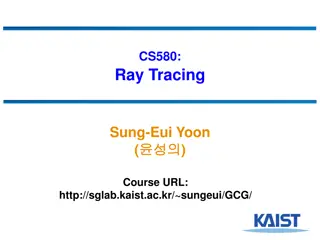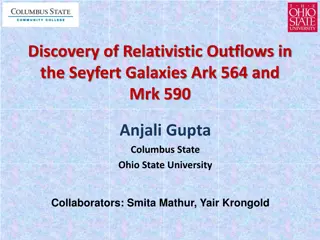Exploring X-Ray Emission from Galaxies by Marat Gilfanov
In this collection of images and discussions from the XMM Workshop 2010, Marat Gilfanov and collaborators delve into the study of X-ray emissions from galaxies. They investigate the properties of galaxies, stellar mass correlations, and the formation and evolution of X-ray binaries. The presentations shed light on populations of accreting X-ray sources and provide insights into high and low mass companions in X-ray binaries, evolutionary time scales, and star formation tracers.
Download Presentation

Please find below an Image/Link to download the presentation.
The content on the website is provided AS IS for your information and personal use only. It may not be sold, licensed, or shared on other websites without obtaining consent from the author.If you encounter any issues during the download, it is possible that the publisher has removed the file from their server.
You are allowed to download the files provided on this website for personal or commercial use, subject to the condition that they are used lawfully. All files are the property of their respective owners.
The content on the website is provided AS IS for your information and personal use only. It may not be sold, licensed, or shared on other websites without obtaining consent from the author.
E N D
Presentation Transcript
Populations of accreting X-ray sources in galaxies Marat Gilfanov MPA, GArching
Hans-Jakob Grimm Pavel Shtykovskiy (IKI/MPA) Rashid Sunyaev (MPA/IKI) Rasmus Voss (MPA, MPE) Akos Bogdan (MPA) Igor Prokopenko (IKI) Stefano Mineo (MPA) Zhongli Zhang (MPA) Marat Gilfanov XMM Workshop 2010
Andromeda galaxy (M31) Chandra X-ray observatory - resolution 0.5 ~confusion free study of XRB population in nearby galaxies Marat Gilfanov XMM Workshop 2010
Why to study X-ray emission from galaxies, properties of galaxies, a new stellar mass and SFR proxy Normal galaxies dominate in number (but not in total flux) Ranalli et al., 20006 Marat Gilfanov XMM Workshop 2010
Why to study X-ray emission from galaxies, properties of galaxies, a new stellar mass and SFR proxy Formation and evolution of X-ray binaries luminosity distributions specific frequency, per M* and per SFR Marat Gilfanov XMM Workshop 2010
X-ray binaries High mass companion Low mass companion Marat Gilfanov XMM Workshop 2010
X-ray binaries High mass companion Low mass companion Marat Gilfanov XMM Workshop 2010
Evolutionary time scales HMXB LMXB 10-50 Myrs 1-10 Gyrs ~ duration of star formation event ~ live time of the host galaxy Star formation tracer Stellar mass tracer Marat Gilfanov XMM Workshop 2010
Lx, M* and SFR HMXB LMXB Marat Gilfanov XMM Workshop 2010
A new M* and SFR proxy? HMXB LMXB Marat Gilfanov XMM Workshop 2010
BUT: scatter and systematics HMXB LMXB Marat Gilfanov XMM Workshop 2010
A new Lx-SFR study (with Stefano Mineo) uniform sample no systematic effects no data analysis issues BUT: scatter remains unlikely to be related to SFR inaccuracy (almost) no physically meaningful correlations the mean is consistent with Ranalli et al and Grimm et al. Marat Gilfanov XMM Workshop 2010
Luminosity functions Marat Gilfanov XMM Workshop 2010
Luminosity functions HMXBs and LMXBs: different shapes/slopes different accretion regimes: wind accretion Roche-lobe overflow Marat Gilfanov XMM Workshop 2010
A new HMXB XLF still a power law with slope of 1.6, fully consistent with Grimm et al. still no feature at the Ledd for a neutron star a possible feature at the Ledd for a black hole Marat Gilfanov XMM Workshop 2010
HMXB XLF & IMF slope accretion of radiation pressure driven stellar wind Marat Gilfanov XMM Workshop 2010
LMXB XLF gravitational braking in longer Porb systems magnetic braking (Sco X-1 etc.) Evolved companion and/or Gravitational braking in ultracompact binaries NS+WD, Porb~10 min short life-time problem King, Bildsten, Postnov and others Marat Gilfanov XMM Workshop 2010
Total number and luminosity of X-ray binaries Lx~ 2 1039 SFR 1 1039 M* Nx(Lx>1037) ~ 7 SFR 10 M* [SFR]= M /yr [M*]=1010 M Marat Gilfanov XMM Workshop 2010
How many black holes and neutron stars become X-ray sources? Marat Gilfanov XMM Workshop 2010
number of HMXBs observed at any given time: fraction of comp. objects duration of X-ray active phase number of HMXB birth rate of compact objects Marat Gilfanov XMM Workshop 2010
Fraction of compact objects X-ray active once in their lifetime Powered by accretion from: high-mass companion (HMXB) low-mass companion (LMXB) Marat Gilfanov XMM Workshop 2010
Dynamical formation of LMXBs in dense stellar environments Marat Gilfanov XMM Workshop 2010
Specific frequencies of LMXBs in the Milky Way specific frequency total mass NLMXB Globular clusters Galaxy ~107 Msun 13 1 per ~106 Msun 5 1010 Msun ~200 1 per ~108 Msun Surface density of X-ray binaries in Andromeda galaxy Marat Gilfanov XMM Workshop 2010
Specific frequencies of LMXBs in the Milky Way specific frequency total mass NLMXB Globular clusters Galaxy ~107 Msun 13 1 per ~106 Msun 5 1010 Msun ~200 1 per ~108 Msun 2 stars involved *2 dependence on the stellar density formation rate of LMXBs in the center of Andromeda galaxy: 100 LMXBs per 1 Gyr Marat Gilfanov XMM Workshop 2010
Andromeda galaxy (M31) image: Li & Wang Marat Gilfanov XMM Workshop 2010
Luminosity functions (with Zhongli Zhang) M31, M81, Cen A, Maffei 1, NGC3379, NGC4697, NGC4278, Milky Way field sources ~200 GC LMXB CXB subtracted incompleteness corrected GC sources paucity of faint sources in GCs no good explanation so far (He accretors Voss et al) Marat Gilfanov XMM Workshop 2010
Faint field sources number of sources contribution to total luminosity ~3% Sazonov et al., 2006 Revnivtsev et al., 2006 Marat Gilfanov XMM Workshop 2010
Cosmic X-ray background CXB spectrum Chandra Deep Field North (2 Msec) ~80-90% of CXB is resolved into emission of AGN and QSO Marat Gilfanov XMM Workshop 2010
X-ray binaries and CXB Cosmic star formation stellar mass (from Nagamine et al., 2006) Marat Gilfanov XMM Workshop 2010
X-ray binaries and CXB 2-10 keV: HMXB ~7-10% LMXB <1-2% <zHMXB> ~ 1.5 <zLMXB> ~ 0.5 HMXB contribution is dominated by ULXs Marat Gilfanov XMM Workshop 2010
Contributions of different HMXB kinds HMXB luminosity function HMXB spectra HMXB pulsars Black holes ULX Swartz et al., 2004 10% HMXB pulsars + 20% BH +70% ULX Marat Gilfanov XMM Workshop 2010
HMXBs & unresolved part of CXB HMXB (ULX) contribution can explain ~50% of the unresolved part of the CXB (via contribution of faint normal galaxies) Marat Gilfanov XMM Workshop 2010
Thank you! Marat Gilfanov XMM Workshop 2010
Formation of binaries in close stellar encounters tidal capture of a normal star by an NS/BH collision of NS/BH with a red giant exchange reactions Clark, 1975; Fabian,Pringle & Rees, 1975; Press & Teukolsky, 1977; Hut & Bahcall, 1983; Lee & Ostriker, 1986; Verbunt 1987; Marat Gilfanov XMM Workshop 2010
Centaurus A radial distribution of LMXBs Chandra point sources 2MASS Marat Gilfanov XMM Workshop 2010
